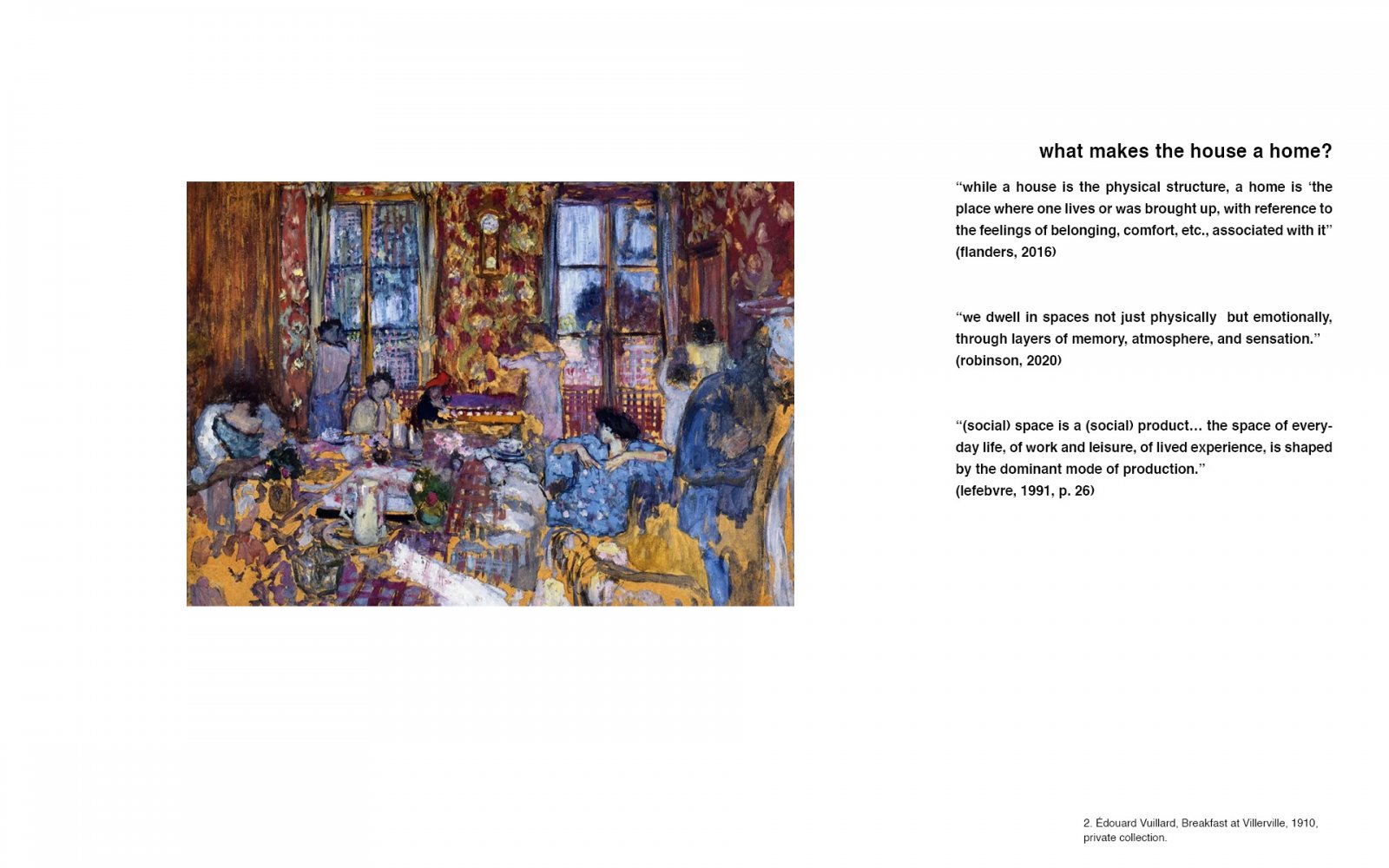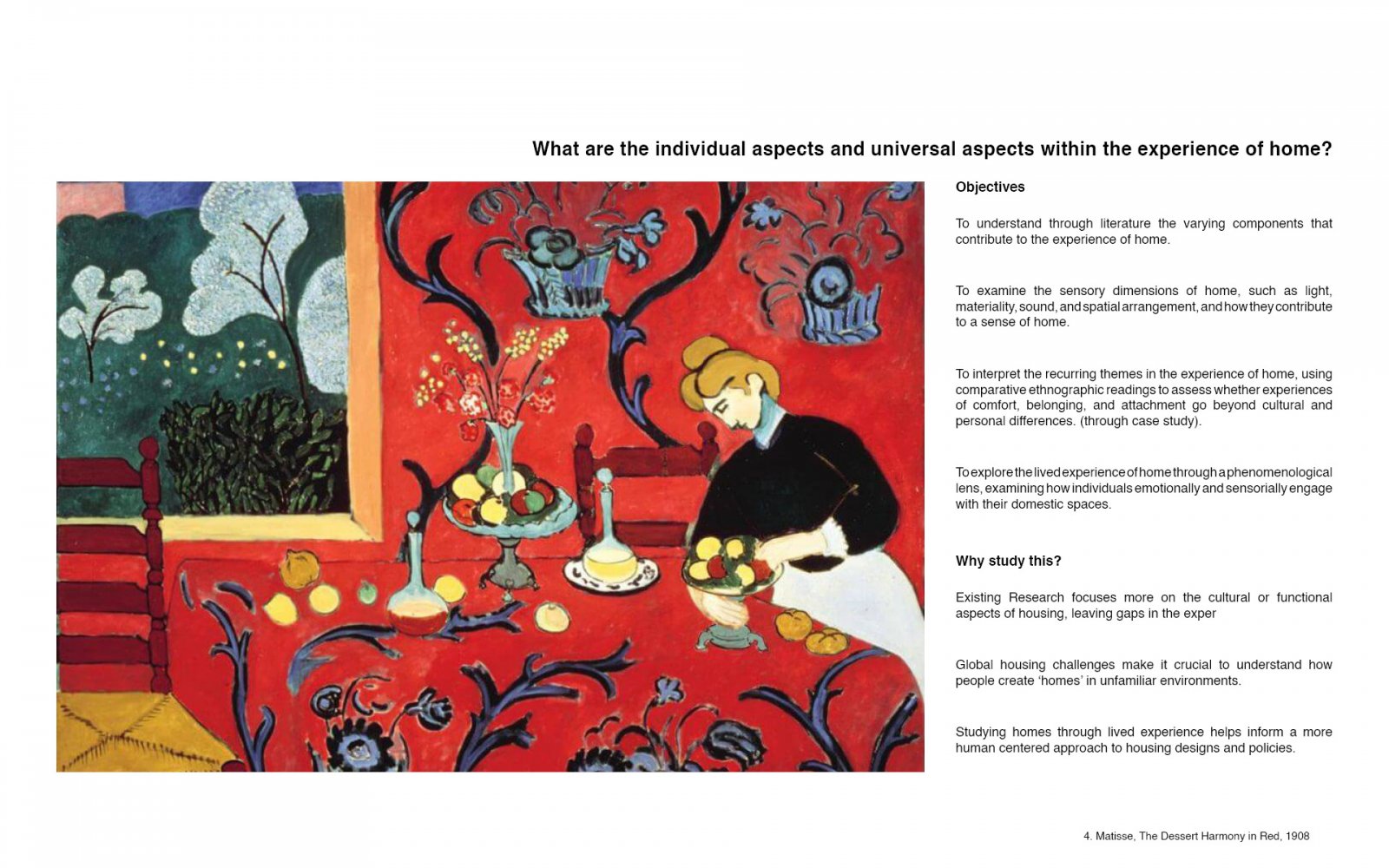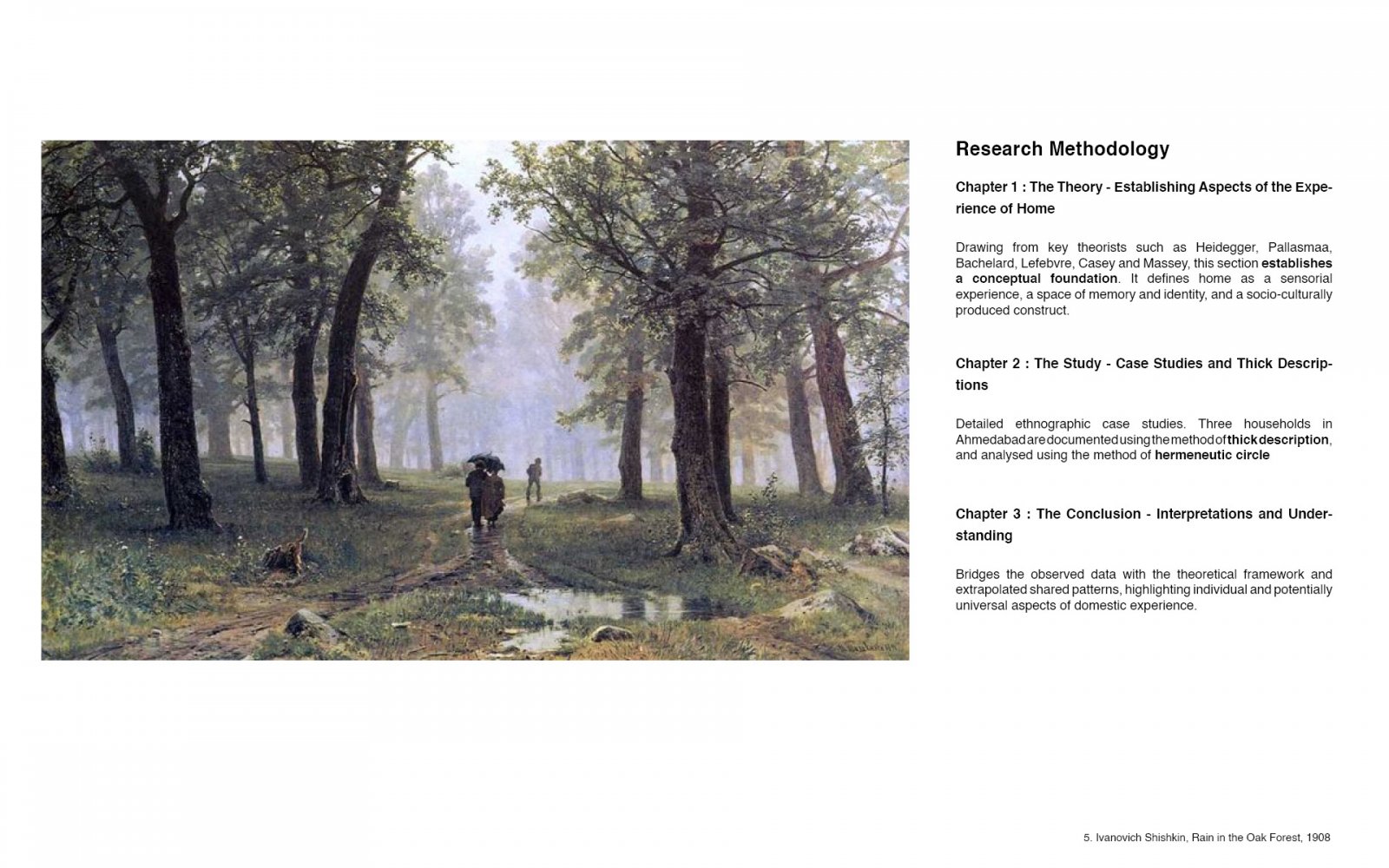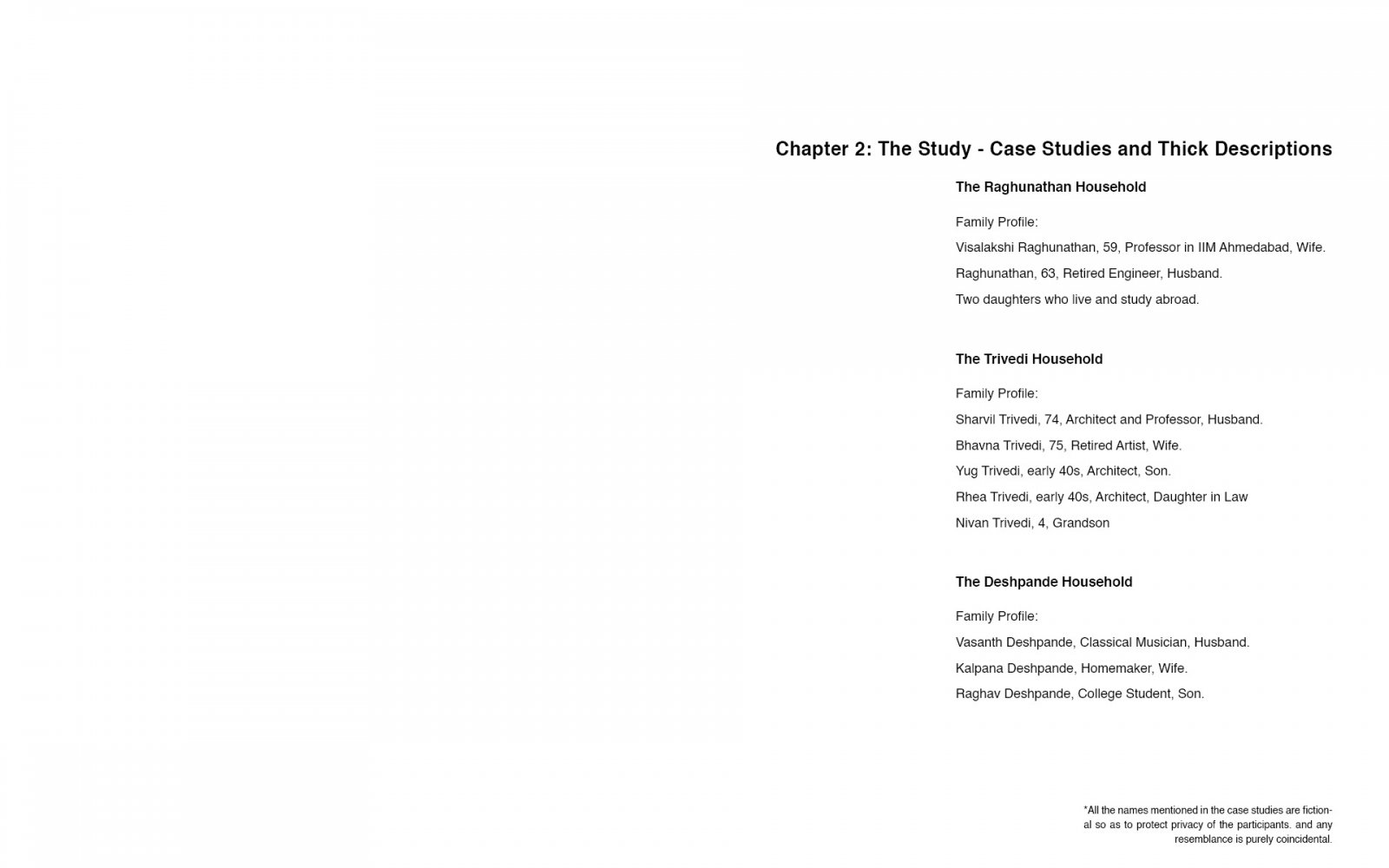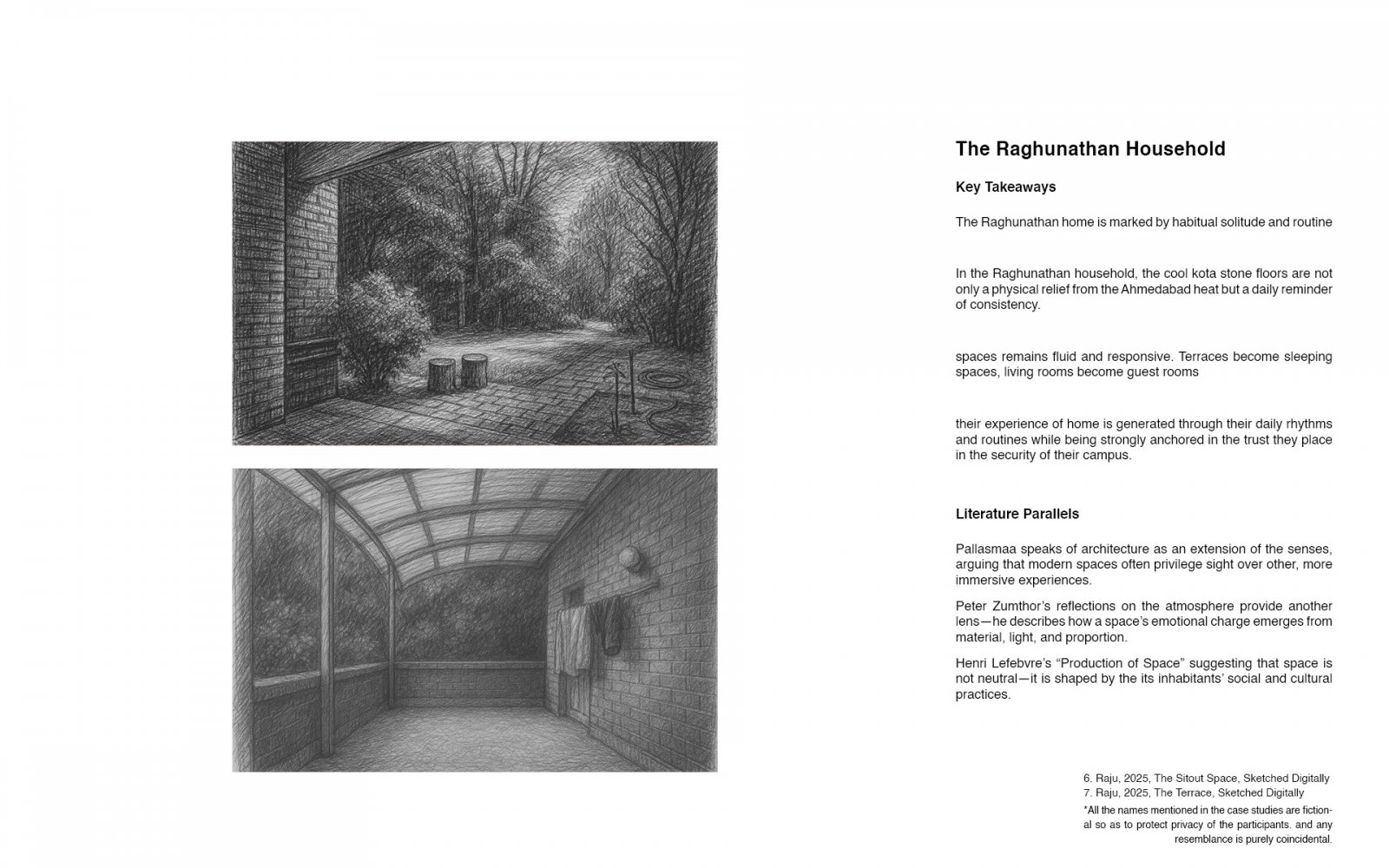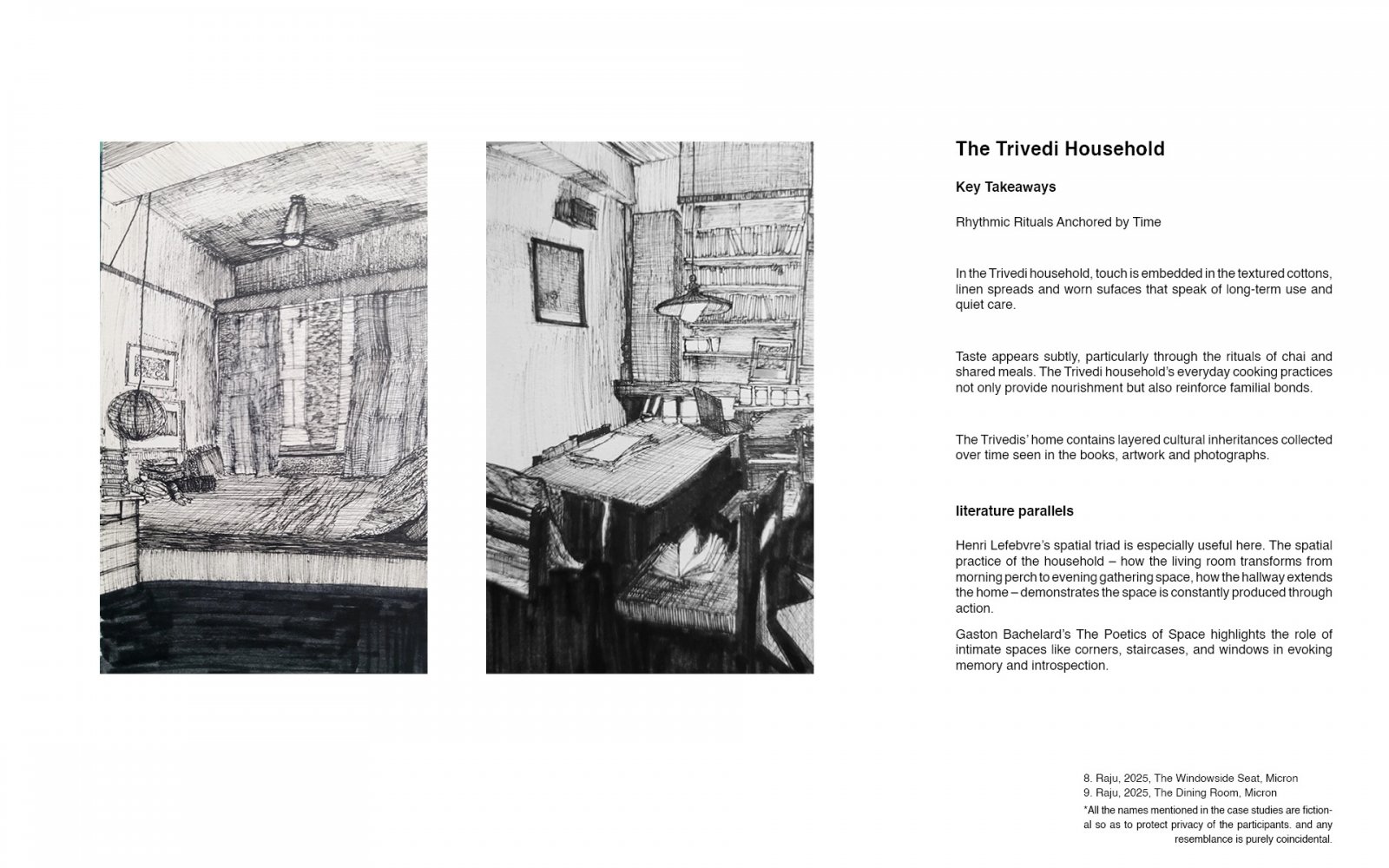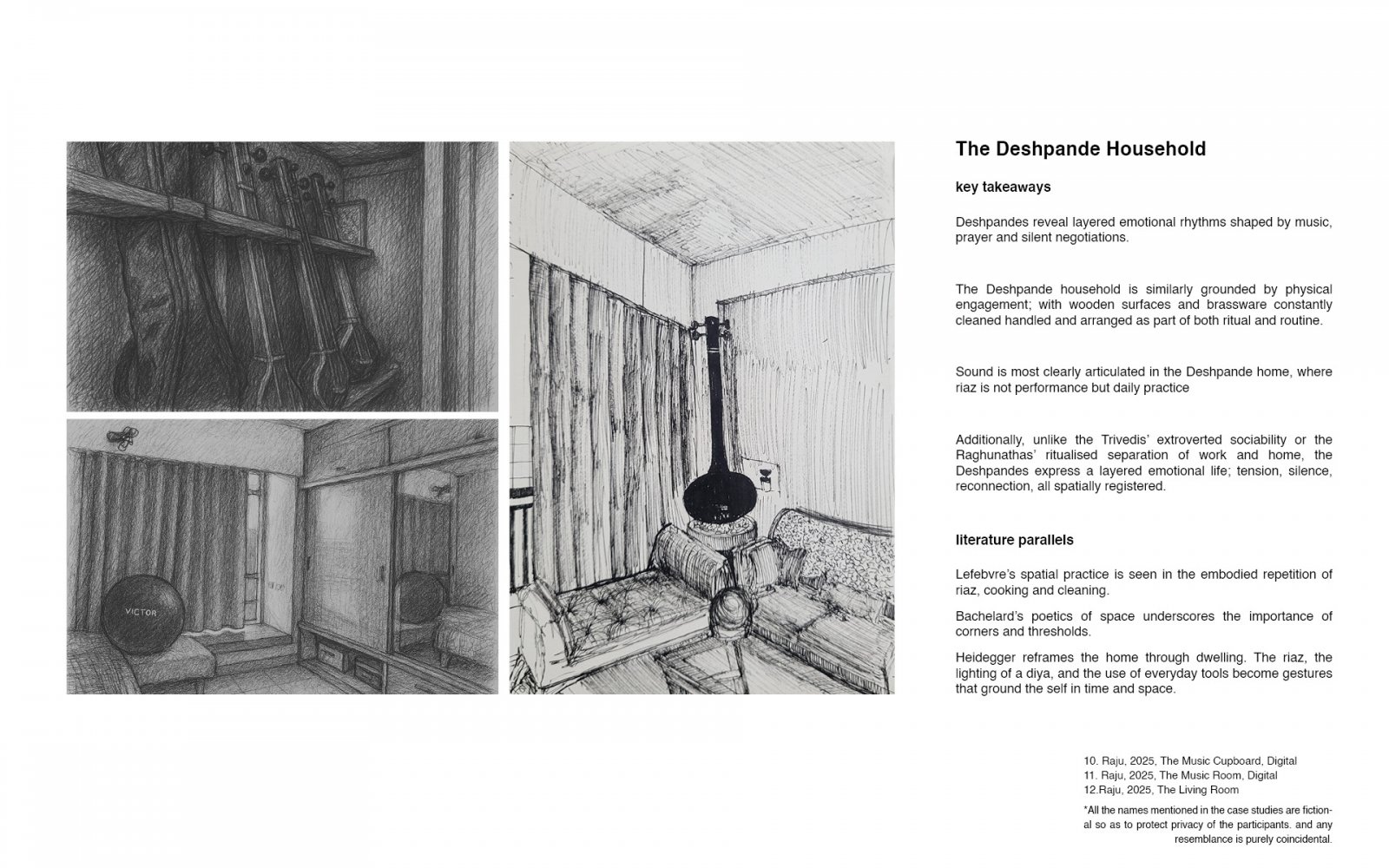Your browser is out-of-date!
For a richer surfing experience on our website, please update your browser. Update my browser now!
For a richer surfing experience on our website, please update your browser. Update my browser now!
In a context where architecture often privileges function, efficiency, and sustainability, the qualitative dimensions of domestic space; such as memory, sensory perception, and atmosphere remain underexplored. This research investigates the question, What makes a house a home? Using a hermeneutic phenomenological methodology grounded in architectural and philosophical theory, the study examines how individuals inhabit, perceive, and emotionally relate to domestic spaces. Drawing on the works of Heidegger, Bachelard, Lefebvre, Pallasmaa, and others, the study conceptualises home as a layered phenomenon shaped by sensorial experience, memory and identity, and socio-cultural forces. Through thick description and sensory ethnography, three distinct households in Ahmedabad, India are explored to uncover how light, materiality, sound, routine, and socio-political contexts influence the experience of home. Each case reveals a unique interplay between subjective engagement and recurring themes, suggesting that while the home is deeply personal, certain spatial and sensory patterns resonate across contexts. The findings emphasize that the experience of home emerges not from static architectural forms but through lived routines, emotional memory, bodily engagement, and cultural meaning-making. The study contributes to a more nuanced understanding of home in architectural discourse and affirms the value of integrating qualitative inquiry into spatial design and analysis.
View Additional Work